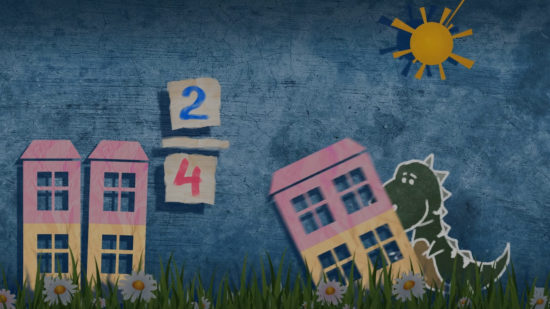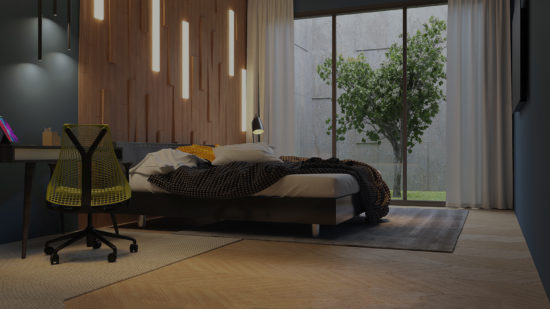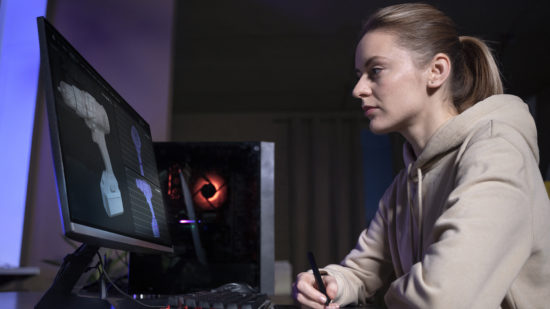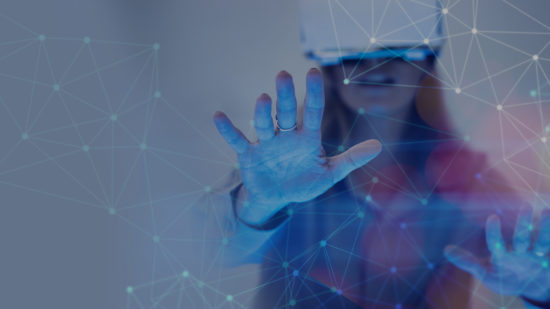If you were asked to picture a dragon in your mind, what would it look like? Would it be a colorful and physics-defying beast resembling a Disney cartoon character or a realistic and textured moving monster akin to the likes of Game of Thrones? In any case, each of them is a miraculous achievement that can undoubtedly be attributed to the animations’ flair for capturing our imagination and depicting real and fictional things in ways impossible to achieve with filming.
However, it’s hard to choose between these two styles because a considerable proportion of the global audience aren’t sure about the difference between 2D and 3D. For example, how complex is 3D animation vs 2D animation? What is the difference between 2D and 3D animation services? We will examine these questions and dive into how things stand between the two animation styles.
What Does 2D Mean?
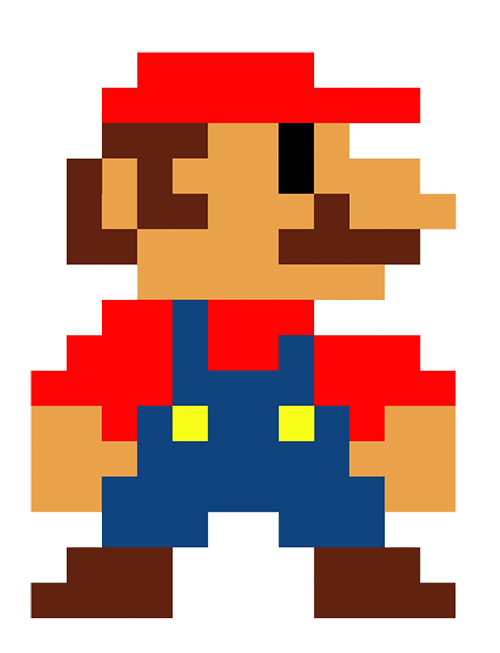
The easiest way to understand 2D is by thinking of a square on a blank paper. The square has 4 sides, width, and height, but there are no other dimensions or depth to speak of. Because it has a width (1) and height (2), this is considered a two-dimensional (2D) object. Naturally, 2D animation often has other characteristics, such as color and movement, but they don’t change the “flat” appearance of the objects and animation in general.
2D animation has been in the industry for quite a long time, having affected the way entertainment products are made in the modern world. Today internet users often google “2D vs 3D animation” in order to find the conceptual and technical differences between the two styles. In this case, animation is primarily used to enliven cartoons, CGI-based movies, and video games. Therefore, our article will shed light on 3D animation and 2D animation tailored specifically to the needs of the digital entertainment industry.
So how exactly does 2D animation work?
2D animation is achieved through sequencing. To begin with, the artist(s) must come up with the 2D animation concept and create all of the unique drawings that will be part of the overall animation. The set of 2D drawings is then sequenced (joined sequentially) to create one second of animation, with longer animations requiring a correspondingly larger quantity of drawings.
Typically, a second of 2D animation includes 24 frames, with every 2 frames consisting of a different drawing. At this speed, the switch between frames happens so quickly that the movement of objects in the frame looks smooth and unbroken to the human eye. Most people associate 2D animation with television cartoons and cartoon films, but the usage of the style is much faster. 2D animation is also prevalent in advertising, mobile and desktop applications, video games, websites, as well as most other visual mediums.
In the epic fight of 3D animation vs 2D animation, no style wins because each of them is used in specific cases. For example, 2D animation is what makes many cartoons and 2D games alive. As you can see, 24 frames per second is enough to ensure the smooth flow of animation so that a human eye rarely sees the difference when it comes to cartoons, which are often by default 2D.
Evolution of the 2D hand animation
The first forms of 2D animation appeared in the 19th century, and drawings at the time were hand-drawn and implemented in different instruments to achieve rapid sequencing. Notably, the kineograph (now known as the flip-book) was invented in 1868. The tradition of creating drawings for 2D animation by hand remained stable until the 1990s. In this period, computer use became common among animators, and they began to take advantage of the first 2D animation software. Thus, the first computer-created 2D animation appeared, and it came to be known as vector-based animation due to the fact that movement in the animation was controlled by vectors. Eventually, live action 2D animation films made with this methodology were released.
Today, most 2D animation is created through computer software, as it is much cheaper and faster to make than drawing by hand. The most popular 2D animation programs around today include Adobe Animate, Toon Boom Harmony, CelAction2D, and Synfig. Many 2D animation programs are free and easy to use, so spending just 10 minutes tinkering with such a program can easily convince anyone questioning “Is 2D animation easier than 3D?” as well as “What is the difference between 2D and 3D?”
Advantages of 2D animation:
- Easy to learn
- Comparatively low production cost
- Quick to create in comparison with 3D
- Greater artistic freedom
Disadvantages:
- Difficult to achieve a high level of realism
- Relies heavily on creativity and originality
- Demand is comparatively smaller
3D Animation: What Is It?

As you probably understand by now, 3D stands for 3-dimensional. While 2D uses the dimensions of width and height in objects, 3D adds another dimension – depth (also sometimes called length). If the analog used to explain 2D was a square, then the accurate analog for 3D is the cube. The cube (as one of the 2D vs 3D animation examples) is not visualized as flat, has perceived depth and volume, and seems to occupy space, despite the fact that the surface on which it exists is flat. 3D animation allows for the addition of very realistic visuals, like lighting effects, tiny details, textures, and this is considered to be the main difference between 2D vs 3D animation.
In the modern gaming world, 3D animation allows for far more than 24 frames per second. Instead, there can be as many FPS as the refresh rate of your screen supports, whether it’s 120hz or 240hz. Moreover, 3D animation is used not only in real-time rendering of the gameplay but also in cutscenes and cinematics, which makes them closer to full-scale movies. With this in mind, 3D animation has significantly expanded the roles of both 3D and 2D technologies in the industry.
How real 3D animation works
The creation of 3D animation is no easy process, and there is no universal approach to it. Still, we can describe it by looking at the 2 main approaches. Firstly, there is a hand-drawn approach. Like 2D, 3D animation can be drawn into frames and connected via sequencing, but this approach is rare. Usually, some kind of computer software is used, and this approach involves 3 essential steps:
1. 3D Modeling. In this phase, all 3D objects that are present in the animation are created in a 3D animation and editing program. Before the animation phase, the model needs to be prepared for all the further manipulations, including sculpting, retopology, riggins, skinning, and texturing.
2. Layout and 3D Animation. The background and setting of the animation are implemented, and the mechanics (movement, changes) are added for the further 3D animation to look natural.
3. 3D Rendering. The 3D objects, layout, and mechanics are all combined and captured to create a completed product (animation).
Naturally, there are many additional steps (such as adding sound effects, special effects, and compositing) that can go into making a 3D animated clip, but the 3 steps above are the core requirements.
Evolution of 3D animation
The first computer-generated 3D animation clips appeared in the 1980s, but the technology only became popular in 1995, with the release of the first computer-animated feature film – Toy Story. This is also when the term CGI (computer-generated imagery) that is often associated with 3D was popularized, and the debate of hand-drawn animation vs CGI first came up. Since that time, 3D animation came to dominate the animation box office, and the use of 3D in other industries followed as well.
Over time, the amount of detail and real-world imitation present in 3D animation only increased, and the technology of today allows us to make an animation that is remarkably lifelike. The most popular programs used for these purposes today include 3ds Max, Blender, Maya, and Cinema 4D. These pieces of software are also praised for ease of use, so 3D animators sometimes passionately participate in the debate of 3D vs 2D animation software.
It should also be mentioned that 3D animation is used in all of the same visual mediums like 2D, but it’s more popular than its counterpart in the creation of animated films, video games, architecture, and virtual reality simulation. Herein lies the primary difference between 2D and 3D — you can use 2D techniques in the creation of 3D products but you can’t take advantage of 3D while working on a 2D cartoon or video game. After all, even 3D texturing requires 2D painting skills.
Advantages of 3D animation:
- Superior visualization and accuracy of 3D movement
- Great detail and realism can be imparted on all 3D animation elements
- Completed 3D models can be reused and applied elsewhere
- Good prospects of modernization in the future
Disadvantages of 3D animation:
- Production costs can be high
- More creative limits to 3D movement and action
- Takes much longer to learn and master
Analyzing the Pros and Cons of 2D vs 3D Animation

Around the world, thousands of 2D and 3D animations and models are created every day by animators, graphic designers, game artists, and other creative people. It would be impossible to measure the ratio of total work created in 2D vs 3D animation, but we can compare the two styles in other ways. Thus, let us proceed with the analysis of the pros and cons of 3D vs 2D animation.
The 3D animation vs 2D animation cost. 2D animation is generally considered to be more affordable than 3D because 3D requires more resource-heavy software and hardware, as well as a lengthier creation process. However, a recurring 2D animation show can be even more expensive than a 3D show, inasmuch as the 3D show will traditionally reuse models with little effort and cost.
The 3D animation and 2D animation demand. This is a tricky quality to measure, but we can make a general assessment by looking at current trends. For example, there is a huge demand for 3D animation in video games, film, product presentations, and virtual reality. In contrast, 2D animation holds a stronger position in television shows, mobile and PC applications, websites, as well as advertisements. Both 2D and 3D are used prominently in all of the aforementioned visual media. Therefore, speaking about the demand for 3D animation vs 2D animation, both areas are in demand.
The 2D vs 3D animation quality. Quality is an incredibly subjective term, so everyone will have their own take on which style gives better quality. Obviously, there is a big difference between 2D and 3D graphics-wise, so if you prefer detail and realism, you may find 3D animation to be right up your alley, while those who prefer inventive and otherworldly visuals may like 2D best. In the end, the quality will depend on the impression of the content and not on which content was used to create it.
Some final thoughts. 2D vs 3D animation: Which fits your project best?
Having analyzed the two different styles of animation and their roles in various markets, we can confidently say that there is no clear winner. Moreover, it is evident that 2D animation is safe and here to stay for a long time. 3D may be the newer technology and is certainly gaining ground in the entertainment industry, but people will always love the creativity and ease provided by 2D animation, and continue to use it. As humanity’s technological prowess advances, we can also expect 2D and 3D animation to keep growing and developing side by side. This is in line with the industry forecast (2D vs 3D animation prognoses).
Now, it’s time to finalize all the thoughts and illustrate the gist of 2D and 3D animation in the form of a table:
2D Animation
-
Area of use. 2D animation is used in the gaming industry, cinematography, advertisements, learning courses, websites, and cartoon production.
-
Tools. 2D animation can be created using specific pieces of software like Adobe Animate, Toon Boom Harmony, CelAction2D, and Synfig.
-
Resources. 2D animation requires less time and resources spent on production due to a more straightforward technology.
-
Reusability. 2D animation is less cost-effective in terms of reusability compared to 3D animation because you have to draw everything from scratch whenever you start a new project.
-
Availability of specialists for hire. 2D animation takes talent and years of practice, meaning it isn’t easy to find the perfect candidate for your specific requirements, let alone a 2D animator.
3D Animation
-
Area of use. 3D animation is also used in film and cartoon production, video game and website development, VR/MR, healthcare, advertisements, and the rest.
-
Tools. 3D animation is usually created using either the motion-capture technology or 3D editing software, including Blender, 3ds Max, Autodesk Maya, and Cinema 4D.
-
Resources. 3D animation is more cost-dependent and time-consuming because it aims to ensure a natural movement of objects, which presupposes more attention paid to every detail.
-
Reusability. 3D animation and modeling allows you to reuse multiple assets, sometimes even with different textures and some tweaks made to each model because no one will notice it.
-
Availability of specialists for hire. 3D animation is a technique verging on the technical side of the production process, which implies that it’s also challenging to find experienced professional 3D animators.
As a result, both 2D and 3D animations are each taken advantage of depending on the project requirements as well as product’s genre, style, scale, budget, time frame, etc. Whether your choice is 2D or 3D animation, you can always find the best candidates for hire by referring to outsourcing and outstaffing companies that specialize in 2D and 3D art production/animation. Whenever you lack knowledge and experience, finding a reliable technology partner will only benefit your business.
What if You are in Need of 2D and 3D Animation Services
Have you got an animation idea that you would like to pursue and develop? If the process is new to you, you may consider learning the basics of 2D and 3D animation and get started with implementing your vision. Still, you should understand that the process will take significant time on your first try. Fortunately, there are many 2D and 3D animation as well as art production studios available that can take care of your animating needs with no hassle.
3D-Ace is one such studio, and our team has extensive knowledge of 2D and 3D animation techniques as well as art creation. If you contact us to discuss your project, our talented team of animators and designers will be happy to give you an estimate and help you out. Furthermore, you can check out our portfolio for a better understanding of the projects we have worked on and brought to fruition.


